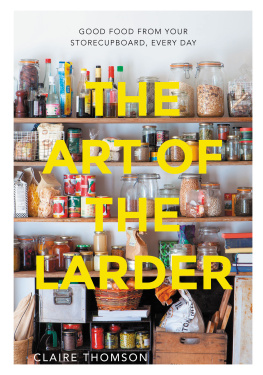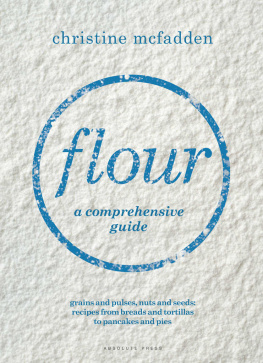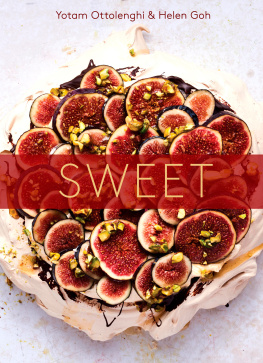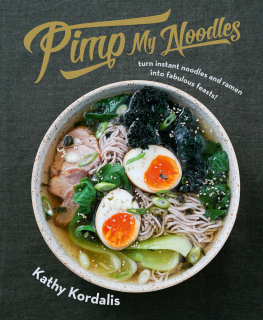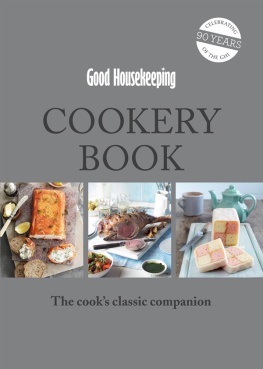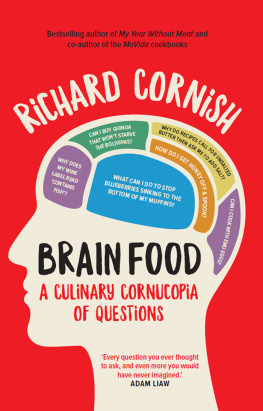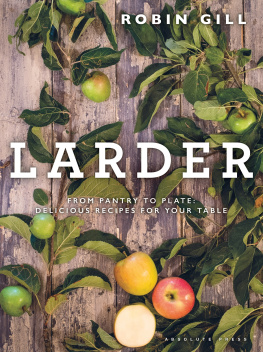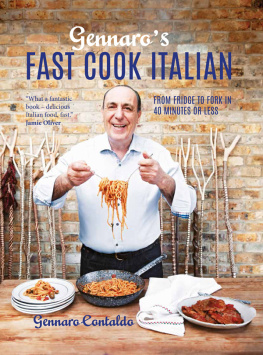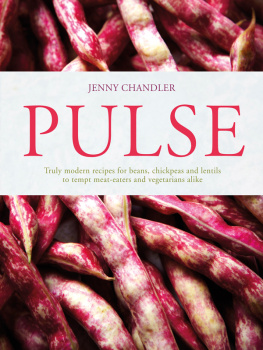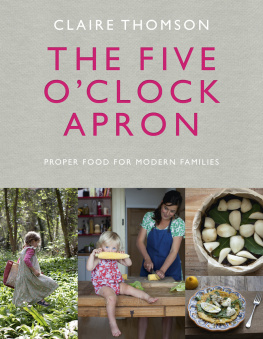CONTENTS


This book concerns my love of and respect for a well-stocked larder. By larder, I dont mean an enormous stately-home-sized pantry, stacked floor to ceiling with luxury preserves and pristine packets. The larder, storecupboard, pantry, cupboard or shelf, call it what you will, epitomizes the nuts and bolts that facilitate good home cooking.
In the writing of this book, with a view to its being used relentlessly and greedily by all who have bought or borrowed it, Im looking to encourage a storecupboard state of mind. Stock your given space discerningly with key pantry ingredients and this culinary framework will help you to cook more creatively, thriftily and with greater ease. A well-stocked storecupboard is an empowering thing, and with it, the possibility of cooking something from anything (a hard-won skill on which I pride myself) is entirely achievable.
But life would surely be a crumply, monotonous existence for everyone if all the food you ever made came solely from the dry store. So (full disclosure), this is in fact a book of two halves, since a storecupboard cannot stand entirely alone if your cooking is to remain inspiring and varied. For a pantry to work at optimum, it must exist in conjunction with plenty of fresh fruit and vegetables. Meat, fish, cheese and eggs can be viewed as culinary stimuli to inspire and govern which particular storecupboard staple you then turn to. Easy.
The synergy of cooking well and eating well is an obvious one. The better the cook, the better the food. Lucky then that cookery is one of those activities that can never outrun itself and become obsolete; there is always something to learn, whatever the calibre of cook. Cooking well takes determination and courage. A good cook does not need extravagant ingredients or gadgetry; bells and whistles do not necessarily make for good eating. What is needed is good-quality ingredients (note: this does not equate with expensive) and the knowledge of how and why to use them. Take soup, for example: a good soup should always start with a soffritto. Without this cooked-down, unctuous medley of vegetables, any resulting soup will fall short. A soffritto will transform a soup, giving it robust backbone and welcome complexity. Patience is crucial in soup-making. Moreover, a canny understanding of spices and herbs to flatter and invigorate more humble ingredients lentils, grains and legumes, for example will boost the food you cook and costs just pennies.
From my time spent cooking in restaurants, I firmly believe that aceing it in the kitchen doesnt have to be about performing flashy recipes by rote with stressful precision. The more memorable chefs and cooks I have worked alongside have displayed an innate understanding of why certain ingredients work so well together and have used them simply and elegantly. These are the people I have always strived to emulate. I will never tire of cooking and accumulating food knowledge and I will always want my ordinary everyday food to be extraordinary food.

The week-night supper of tinned sardines with breadcrumbs, fennel seeds and chilli, for spaghetti, must be as delicious as the stellar Sunday offering of pork chops cooked with rhubarb and hazelnuts.
These days we are lucky with the widespread access we have to so many different ingredients. That said, and often overheard, so-called esoteric ingredients can put people off attempting to cook a certain recipe at home in their own kitchen. While Im grateful for supermarkets and the accessibility they promote, if you shop in any Indian, Middle Eastern and Turkish, Eastern European and Asian shops, as well as trying online merchants, you will discover an inexpensive and exhaustive array of goods. Spices, grains, pulses, fermented products, various flours, cured meats and more, it is the very regionality of these ingredients that can make them feel unique their speciality doesnt mean that they are difficult to find. Seek them out and equip your storecupboard.
The contents of your storecupboard represent culinary independence. Ingredients for me spark adventure, a sort of where in the world would I like to cook? attitude. Take gram flour (ground chickpea flour), for example: this thrifty ingredient is a pantry staple and a favourite of mine. It can be used in traditional Indian recipes, such as pakora, in southern French, in socca, and also in Italian cooking, for . Knowing how this amazingly versatile flour behaves when you cook with it means that in combination with other storecupboard and seasonal ingredients, you can make a variety of dishes from the one core ingredient.

The magpie in me appreciates the ability to be able to bend and experiment within cooking. Granted, there are certain recipes that are inviolable and for good reason. I remain in awe of the Italian grandmother who cooked for me in Naples one summer during my early twenties. Her view on linguine con vongole was absolute: there was one way to make the dish, and hers was the only way; any other method or deviation from ingredients simply wasnt linguine con vongole (more on this later).
Cooking well in my experience is about understanding ingredients. When to pile on the flavour and when to just let two or three speak for themselves.
It goes without saying that the kitchen is the axis of my household. I love the clatter and the hubbub, the way different family members interact with the same space, the sense of anticipation as smells and cooking sounds drift in and out on a slipstream. Vegetables dominate in the food I cook; olive oil and lemons are always to hand. A piece of cheese bought for a treat or a joint of meat to roast and savour on a Sunday these are the non-essential, sometimes luxury ingredients. Above all, my storecupboard is the main artery of my cooking; its contents provide a reassuring system from which I cook day in, day out.
Give me an apron, a sharp knife, a chopping board and some good ingredients, and I am happy; truly I can cook almost anything. I cook because I love it and we all need to eat.
Note on recipes: All dishes serve 4 people unless specified otherwise.
Pasta reaches far and wide, from the traditional, rich fresh egg doughs rolled and cut by hand in the north of Italy and beyond, to the coarse semolina pastes of southern Italy fashioned by thumb and forefinger, the phantom pasta category that is gnocchi and gnudi, and the Berber-invented couscous of northern Algeria. To tether these ingredients to the storecupboard, I will concentrate my efforts specifically on dried pasta, the sort that you buy in packets and then try desperately to duplicate in the next shop, to enable the seamless move from one bag to the next. Its usually made from hard durum wheat, the same as used to make bread, ground down and worked with water, shaped (extruded), dried and ready for use. Dried pasta is an ingredient that is as prolific as it is eccentric in terms of the sheer number of shapes and sizes. It is a grocery essential. Dried pasta is not subordinate to fresh; it is a different ingredient.

